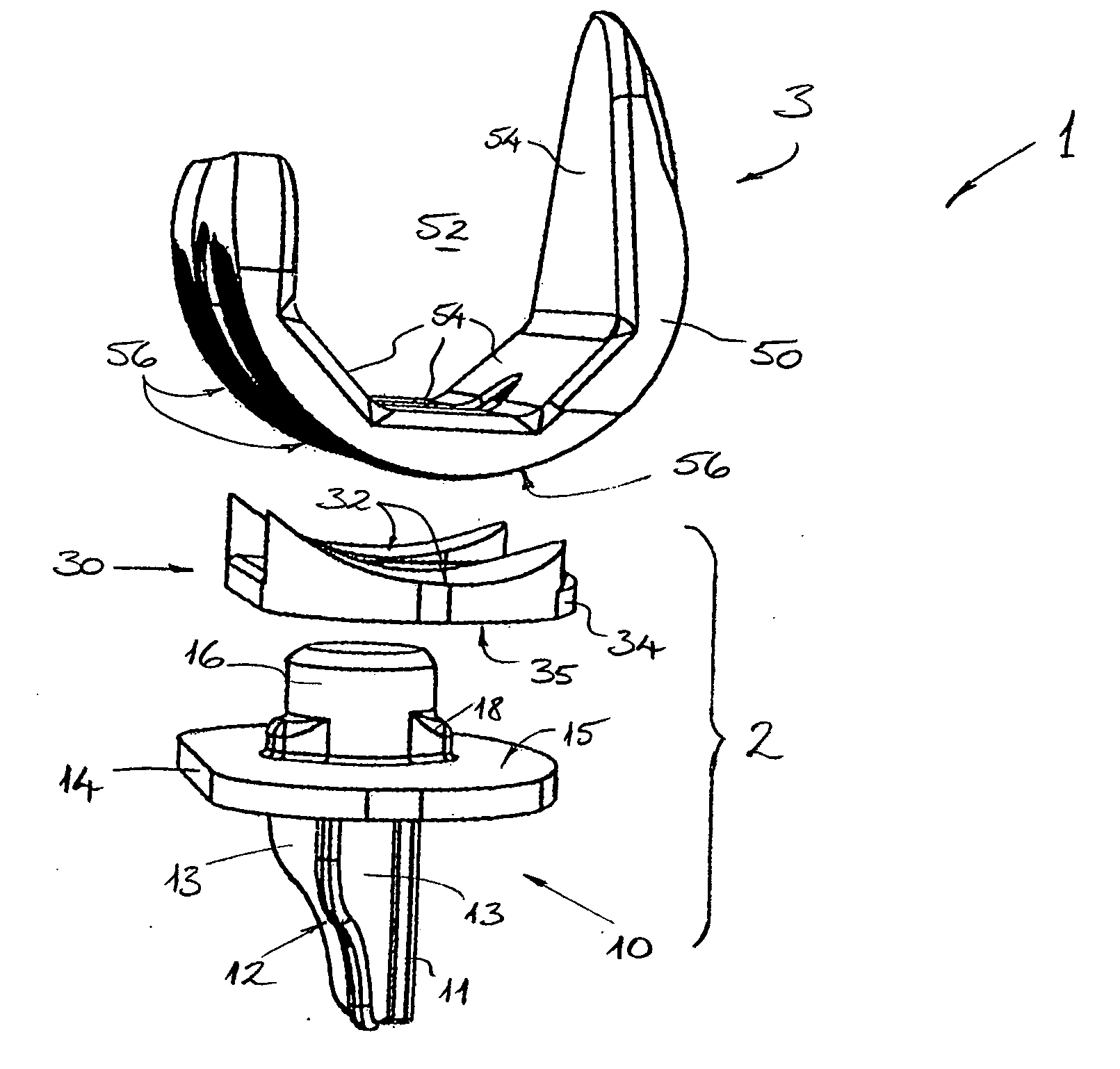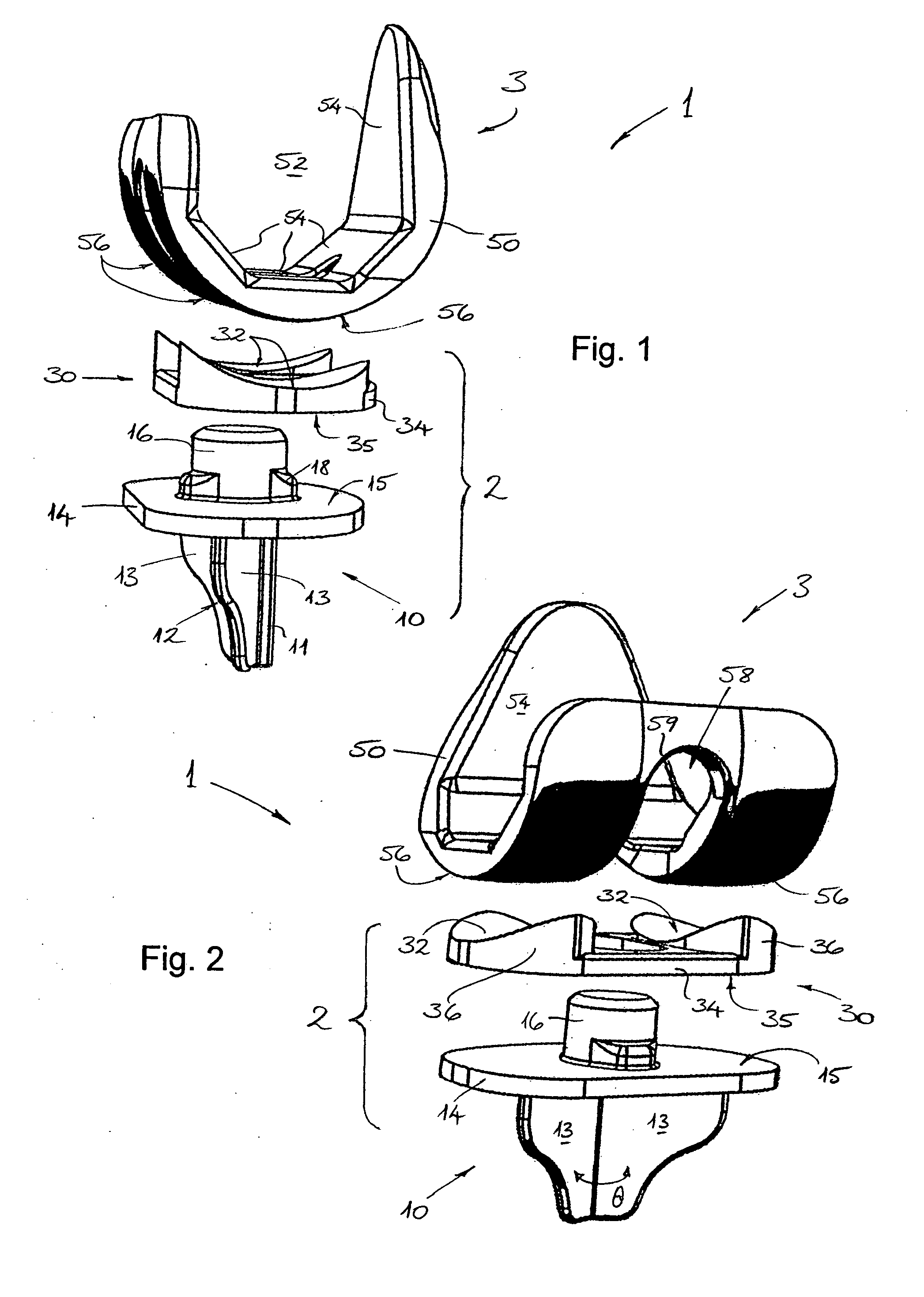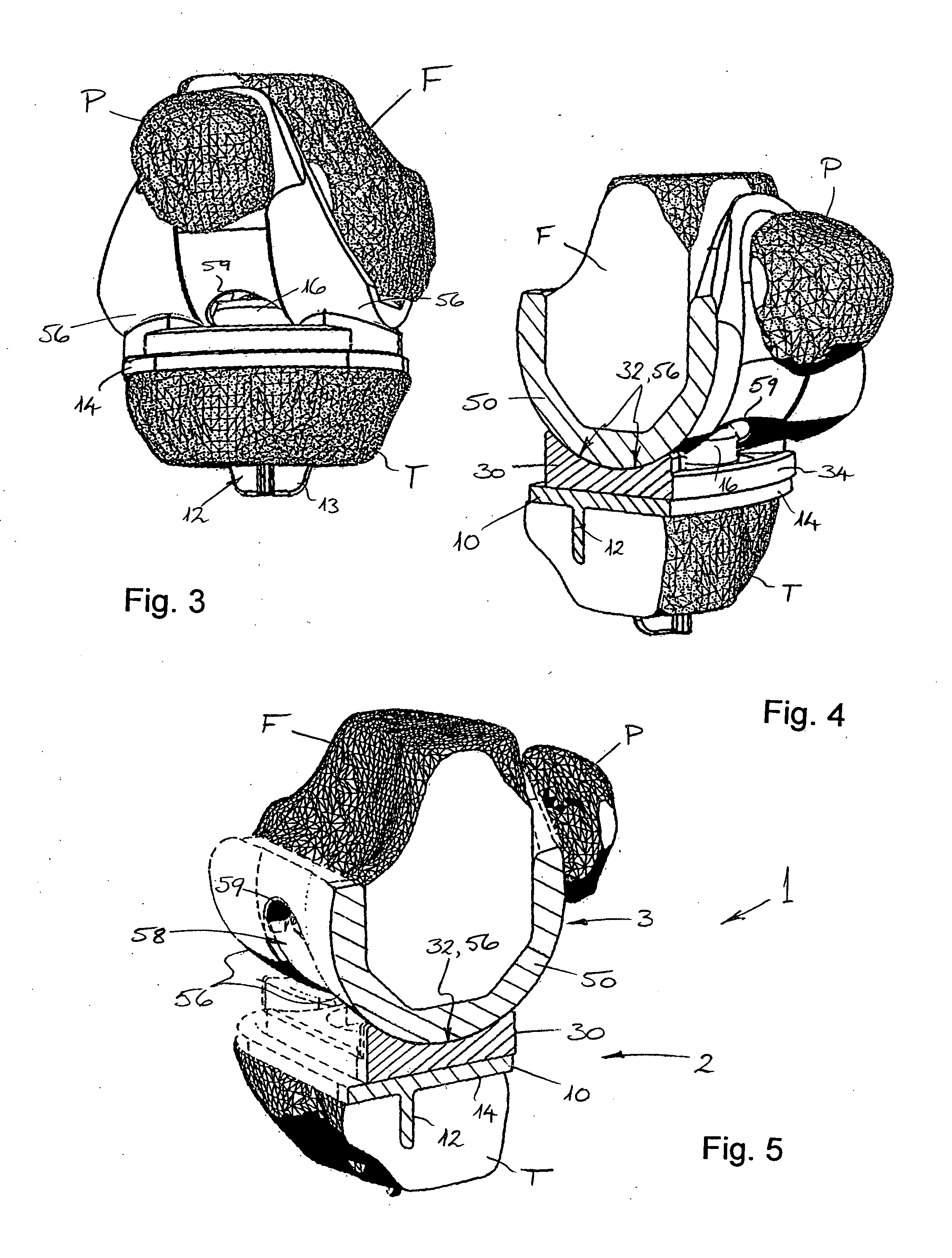Knee joint prosthesis and related method
a joint and joint technology, applied in the field of knee joint prosthesis, can solve the problems of reducing the service life of the endoprosthesis, loosening of the implant, failure of the prosthesis components, etc., and achieves the effect of good tribology and wear characteristics, high degree of conformity
- Summary
- Abstract
- Description
- Claims
- Application Information
AI Technical Summary
Benefits of technology
Problems solved by technology
Method used
Image
Examples
Embodiment Construction
[0099]The Referring firstly to FIGS. 1 and 2 of the drawings, the primary components of a knee joint prosthesis 1 according to a preferred embodiment of the invention are shown in exploded perspective views. As is clearly apparent, the knee joint prosthesis 1 in this embodiment is comprised of three discrete or separate parts. The lower part and the middle part in FIGS. 1 and 2 combine to form a tibial component 2 for attachment at an end of a tibia T of a patient, while the upper part forms a femoral component 3 which is designed to be attached at an end of a femur F of the patient.
[0100]With reference to FIGS. 3 to 5 of the drawings, the implanted or in-use orientation and interrelationships of the tibial component 2 and the femoral component 3 of the knee joint prosthesis 1 of the invention are illustrated. Furthermore, in addition to the tibia T and femur F, the patella P (commonly called the “knee cap”) is illustrated in relation to the components of the prosthesis.
[0101]Consid...
PUM
| Property | Measurement | Unit |
|---|---|---|
| angle | aaaaa | aaaaa |
| angle | aaaaa | aaaaa |
| frequency | aaaaa | aaaaa |
Abstract
Description
Claims
Application Information
 Login to View More
Login to View More - R&D
- Intellectual Property
- Life Sciences
- Materials
- Tech Scout
- Unparalleled Data Quality
- Higher Quality Content
- 60% Fewer Hallucinations
Browse by: Latest US Patents, China's latest patents, Technical Efficacy Thesaurus, Application Domain, Technology Topic, Popular Technical Reports.
© 2025 PatSnap. All rights reserved.Legal|Privacy policy|Modern Slavery Act Transparency Statement|Sitemap|About US| Contact US: help@patsnap.com



